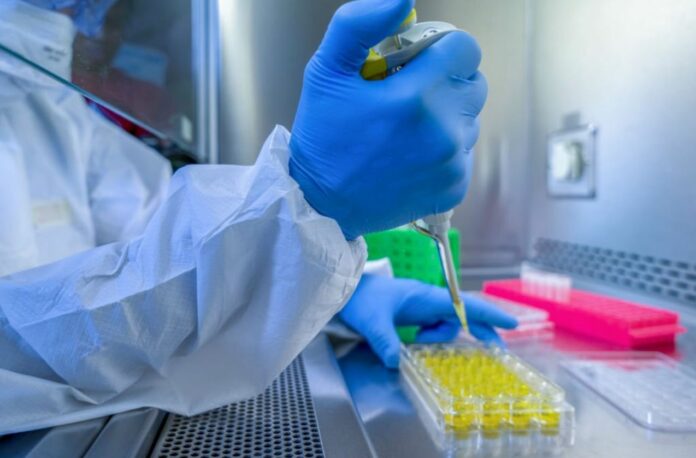MYC is one of the “most wanted” cancer targets since it is involved in the development and maintenance of several prevalent human malignancies, including breast, prostate, lung, and ovarian cancer. No drug that blocks MYC has yet been approved for use in people.
MYC has long been regarded as an ‘undruggable’ target, despite playing a significant role in numerous cell-signaling pathways that support a variety of different cancers.
It has been difficult to develop treatments that are helpful while also avoiding side effects.
Researchers have expended a great deal of time and effort searching for drugs that target MYC effectively.
For the first time, a phase I clinical trial now demonstrates that a drug that targets the cancer-causing gene MYC suppressed its activity.
Dr. Elena Garralda, Director of the Early Drug Development Unit at Vall d’Hebron Institute of Oncology (VHIO) in Barcelona and a member of the meeting’s scientific committee, presented preliminary findings from the trial at the 34th EORTC-NCI-AACR Symposium on Molecular Targets and Cancer Therapeutics in Barcelona, Spain.
“MYC, according to her, “is one of the ‘most wanted’ targets in cancer because it plays a key role in driving and maintaining many common human cancers, such as breast, prostate, lung and ovarian cancer. To date, no drug that inhibits MYC has been approved for clinical use.”
Scientists at VHIO have created a mini protein called OMO-103 that can penetrate cells and reach their nuclei. In lab and mouse trials, they demonstrated that it successfully blocked MYC’s ability to promote tumor growth by disrupting MYC’s function of managing the flow of information from numerous common genetic mutations seen in cancer.
In April 2021, 22 patients were enrolled in a phase I clinical trial led by Dr. Garralda in collaboration with two additional Spanish facilities to examine the safety of OMO-103 and look for any early signs of cancer control.
The patients had a variety of solid tumors, including non-small cell lung cancer, bowel cancer, and pancreatic cancer. They had previously undergone between three and thirteen different therapies.
OMO-103 was administered intravenously once a week at six different dose levels ranging from 0.48 to 9.72 mg per kg of body weight. Biopsies were taken from the tumors at the start of the study and three weeks later to examine levels of MYC gene activity and other biological markers for cancer.
Eight out of the twelve patients who underwent CT scans after nine weeks had stable conditions by October 10 2022, showing that the treatment had prevented cancer from advancing.
Two were diagnosed with pancreatic cancer, three with colon cancer, one with non-small cell lung cancer, one with sarcoma, and one with salivary gland cancer.
“It’s still very early days to assess activity of the drug,” adds Dr Garralda, “but we are seeing stabilization of disease in some patients.
“Remarkably, one patient with pancreatic cancer stayed on the study for over six months, his tumor shrank by eight per cent and there was a reduction in tumor-derived DNA circulating in the blood stream. The patient with a salivary gland tumor has stable disease and is still in the study after 15 months.
“The most exciting thing is that biological markers show that we are targeting MYC successfully. In addition, the adverse side effects are mostly mild, which is important when we start to think about next steps and combining OMO-103 with chemotherapy or other therapies.”
Mild reactions to the intravenous infusion, such as chills, fever, nausea, rash, and low blood pressure, were the most common adverse treatment-related side effects. More infusion reactions were linked to higher dose levels, however, these events might be effectively handled. One patient experienced the only dose-limiting response, inflammation of the pancreas.
Analysis of how OMO-103 was absorbed and metabolized in the body revealed that it persisted in the serum for at least 50 hours.
“We have experimental evidence that this could be a significant underestimate of how long the drug remains in the tumour. Evidence from our work in mice suggest drug concentrations in the tumour that are at least four-fold higher than in the blood,” adds Dr. Garralda. “In addition, even after long-term treatment, we could not detect any anti-drug antibodies, which can decrease the amount of drug available and therefore make it less effective.”
“OMO-103 is the first MYC inhibitor to successfully complete a phase I clinical trial and to be ready to proceed to a phase II trial. We have determined the recommended dose for phase II to be 6.48mg/kg,” she concluded.
Image Credit: Getty
You were reading: Drug That Inhibits Common Cancer-causing Gene Just Hit A Major Milestone
